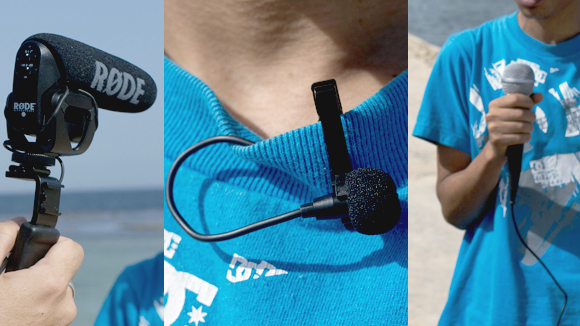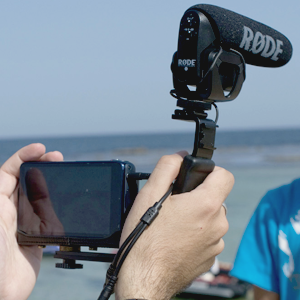
Small World News develops educational and training materials to support its core mission of expanding the reach of local storytellers in zones of crisis, conflict, and transition. Our guides are designed to make technology approachable for anyone motivated to capture a story, while providing information that has a demonstrable effect on raising the quality of production. We’ll be sharing tip-sheets we’ve put together here on the blog. Today, a short guide to using microphones with your mobile.
Remember that sound is half the story. Paying close attention to the quality of the sound you’re recording is an easy way to improve the overall quality of your video, and increase the impact of the story you have to tell.
HOW-TO
You need a special type of microphone to connect to a mobile device. If you look at the plug at the end of any mobile headset you’ll notice it’s different from the plug at the end of a regular set of headphones.
Your mobile headset has 3 black stripes. These are: a connection for the microphone, a left ear channel, and a right ear channel. (A normal set of headphones has only ear channels.)
To use a mic, you’ll need one which is made to work with a mobile connection, such as the iRig Cast. If not, make sure to have an adapter, like one shown here:
4 Microphones: A Live Comparison
Since your equipment will determine the quality of what you capture, we’re going to talk about 4 types of microphones at your disposal:
1. Built-in microphone
2. Shotgun microphone
3. Lapel microphone
4. Hand-held microphone
Watch this video and listen to how each microphone records differently. Which mic would you choose to use to interview someone? What about if you wanted to keep a low profile?
Each type of microphone has benefits and disadvantages. Let’s look at them all.
Built-in microphone
This microphone is a part of any video recording device. Only depend on the built-in mic if you are concerned about safety and don’t wish to be observed.
Advantages:
Disadvantages:
Shotgun microphone

Called a “shotgun” due to its shape and its recording pattern, which picks up sound in a similar path to a shotgun blast (scattering outwards in a cone shape from the tip of the mic). The shotgun mic is great for recording the overall scene and background sounds.
Advantages:
Disadvantages:
Lapel microphone
This microphone takes its name from its placement. Lapel mics are placed on the lapel or collar of the subject you intend to record. Also known as a lav, lavalier, or neck mic, among other names. The lapel mic is perfect for sit-down interviews.
Advantages:
Disadvantages:
Handheld microphone
This microphone is commonly seen in the hand of correspondents reporting live at the scene of events. The handheld mic works well for correspondents reporting on-camera, or conducting interviews in a public area, on-camera.
Advantages:
Disadvantages:
So in Review:
—
Thanks for taking a look with us at the different types of microphones you can use for making stories with your mobile device. Check back here every Friday for more simple ways to help your mobile production pack a bigger punch.
[…] we discussed in previous posts, we tested 3 types of microphone, to provide a journalist with microphones for most use cases. So […]